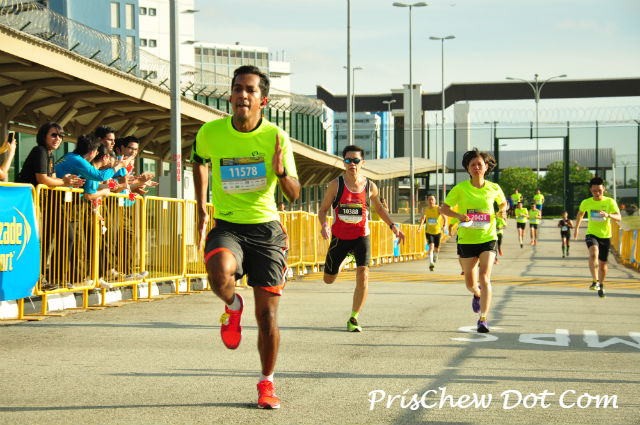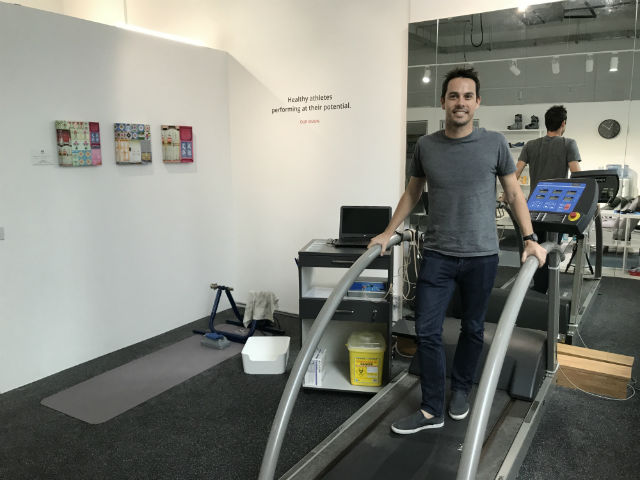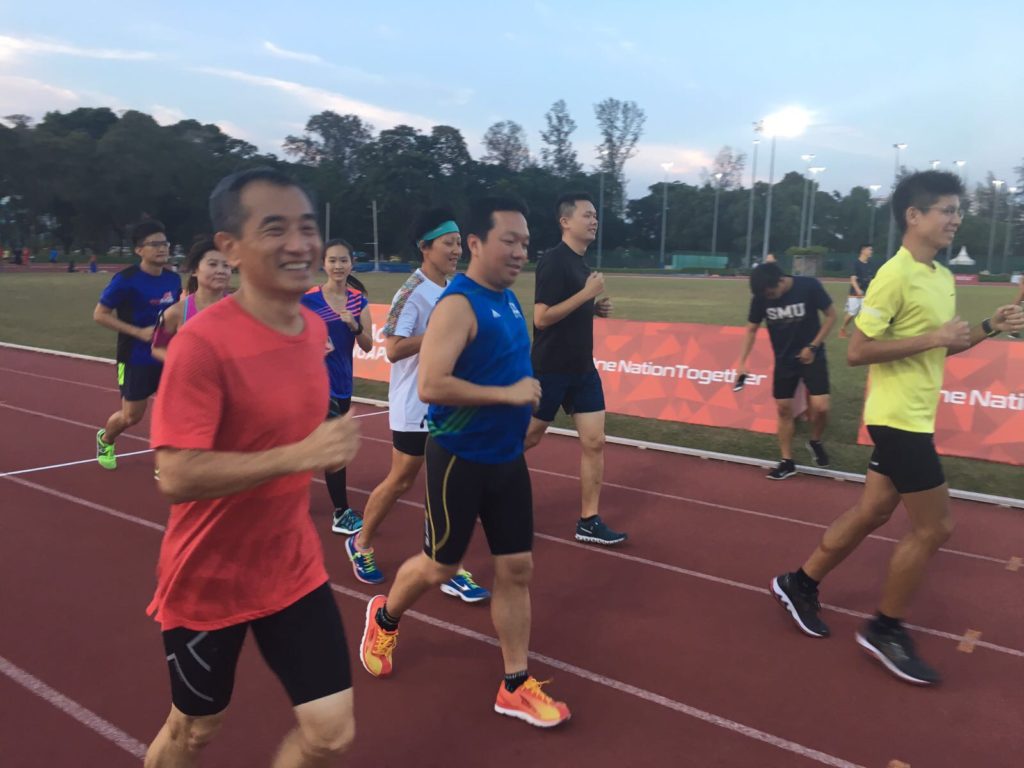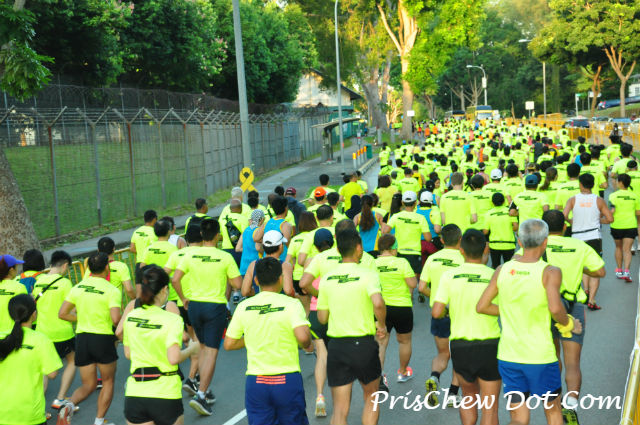Ben Pulham, 36, is the founder of Coached – a heart rate training programme targeted at runners and triathletes, that allows you to track, optimise and enjoy your training.
For the past 16 weeks, Coached has been working together with the Under Armour Run Crew and radio station Power 98 FM, on a 16-week training programme for the Standard Chartered Singapore Marathon. Training clinics are held for runners every Thursday under this programme.

Coached is working with Under Armour Run Crew and Power 98 FM.
It was at one of these training clinics, that Ben had shared some quick tips with runners present. He was explaining about why runners get injured and tips on injury prevention.
Runners get injured because they make drastic changes to their biomechanics
Said Ben, “One of the main reasons why runners are getting injured, is because they try to make drastic biomechanical changes. For example, they try to run or lift their knee higher than they should, or they try and adopt a mid foot running style because mid foot running is the ‘in’ thing at the moment.”
He continued, “But that is never a winning strategy. When you make drastic biomechanical changes, you will get hurt. On rare occasions it may help you, but more often than not, it will make things worse.”

Many runners get injured because they make drastic changes to their biomechanics.
Only make changes if you are already injured
The only time when Ben feels that it is necessary to make such changes is when you are already injured. He explained, “If you are already having a serious injury and you need to fix that injury, you need to make changes, but otherwise, it will work in reverse and you will get hurt.”
He added, “So do not listen to your friends who tell you to change the way you run. If you are running injury free, your body is running at a way that is naturally good for it, and if you try and optimise it by changing your biomechanics, what you are doing is simply putting yourself at risk of getting hurt. In my opinion, that is not a good strategy.”

Ben Pulham.
Running Drills help
Instead Ben recommends that runners do drills in order to improve their running form. He said, “I know that they do not feel like they do much but trust me, they do. When they are strung together for a few weeks, they will naturally enhance your running form. They are not something you would think about when you go out and run, but the outcome of doing these drills to the best of your ability, is that it will improve your technique and lower your chances of injury.”
Drills that Ben typically teaches Coached runners to do, includes A-March, A-Skip, Fast Feet, Calf Hops, Power Skips and Bounding.

Ben generally recommends that runners do drills to improve their form.
I have been exposed to these drills for a while now. At the beginning, when I started out, they were quite awkward and I was having trouble doing them, but Ben has since commented that I am getting better at them these days. I have also been running injury free since I joined Coached and perhaps these drills might have something to do with it, too.
Runners get injured because they do not know what to do in training
Secondly Ben feels that runners are getting injured because they do not really know what to do in training.
Ben explained, “Runners are doing more than what they are conditioned to handle. They are running faster than they should, at certain stages of their training, running above what I believe they are capable of. So they are putting themselves at higher risk, by training above their heart rate zones.”
Invest in a heart rate monitor
To correct this, Ben recommends that every runner should at least estimate their heart rate zones and invest in a heart rate monitor so that they can stick to their zones, and do not have to guess any more.

Coached runners train with a heart rate monitor.
Ben is, in fact, a huge advocate of training by heart rate and time, rather than by pace and distance.
Said Ben, “I am happy to help runners work their zones and figure them out. A heart rate monitor will give you control of your training. It will slow you down to the pint that you need to slow down, or speed you up to the point you need to – if you are very aerobically fit. Most importantly too, it gives you a gauge so that you do not need to guess.”
Running too much than the body can handle, is a likely cause of injury
He added, “Running too much volume before the body is conditioned to handle it is a main reason why runners get hurt. So to prevent this, follow a structured training plan or stick to your heart rate zones to keep your ego in check so that you are doing only what you need to do.”
In fact Ben shared more about his own running experiences too; he used to be a professional triathlete, prior to setting up Coached.
Said Ben, “I was running upwards of 100 miles (160km) per week, doing some big weeks on top of swimming and biking. I was training full time for 10 years and before that, I was running for 15 years, and I have only had two real annoying injuries during that time. One of them was ITBS (Iliotibial Band Syndrome) but that was my fault because I was being stupid and did more than what I was supposed to. The other was compartment syndrome and I had surgery for that in 1998.”

Running more than the body can handle, is a likely cause of injury.
Be wise about your training
A common overuse running injury, ITBS is inflammation of the Iliotibial band, located on the outside of the knee, as it rubs against the outside of the knee joint.
Ben added, “But what I am actually getting at here, is that if you control what you can and you are wise about your training, then there is a high chance that you will not be hurt. As a coach, the most common questions that I get are relating to injuries. If you are injured, the most common reason is that you are doing more than what you are capable of, at the given period of time. So you need to be patient.”
Having a weak butt and glutes predisposes you to knee injuries
Another reason why Ben added that runners get injured too, is because they have a weak butt and glutes. Said Ben, “If runners are doing everything right but still end up with knee injuries or knee pain, then that is largely the result of a weak bum. So doing exercises that strengthen the butt or the glutes will limit your chances of getting hurt, or at least having knee pains.”
Continued Ben, “Stretching using a foam roller to keep the fascia supple, also helps in the prevention of injury.”

The human body is made to run, says Ben.
The human body made to run
So if you do all of the above things and follow his advice as stated here, then Ben stressed that you should not get injured at all.
He said, “The human body is made to run. When you do it properly and progressively, and control what you can control, you should not end up with injuries at all.”

Leave a Comment